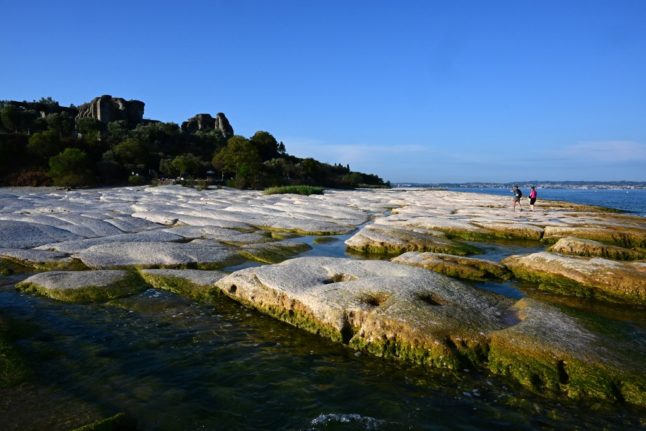The pedalos lie far from the water’s edge and the flat stone slabs around the Sirmione peninsula are exposed on Garda, Italy’s largest lake, which is is suffering like many others from months without rain.
The low water level was causing concern among visitors this week at Garda, a major tourist destination nestled among mountains in the north of the country, but local authorities stressed that tourist activities were not affected.
READ ALSO: Historic drought resurfaces World War II bomb in Italy’s River Po
“We are currently at 30 centimetres (12 inches) above the (benchmark) hydrographic level,” compared to an average for this time of year of between 80 and 100, said Gianluca Ginepro, head of Garda Unico, which promotes the lake.
It is the lowest since 2007, when levels dropped to 9.9 cm, according to official data.
“It’s a situation to keep an eye on, even if from the point of view of using the lake – like wind surfing, sailing – there is no problem,” Ginepro told AFP.

Tourism was holding up well, he said, although operators of trips across the lake had switched from hydrofoils to catamarans.
READ ALSO: Hosepipe bans and pools: your questions answered on Italy’s drought restrictions
He said however that “the possibility of providing water for agriculture has dropped”.
Farmers have been hit hard by a lack of water, particularly in the River Po, which stretches across northern Italy and is suffering its worst drought for 70 years.
The issue goes beyond Italy, with land across Europe parched by a lack of rainfall and sweltering temperatures, driven by climate change.
Several other European countries, as well as reporting record temperatures during recent heatwaves, have also reported low levels of water in rivers amid drought.



 Please whitelist us to continue reading.
Please whitelist us to continue reading.
Member comments